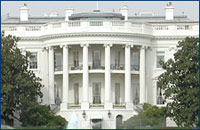 Earlier this week, I attended the Third Annual BNA/ABA Patent Litigation Conference (as a result of a wonderful invitation by Barry Grossman of Foley and Lardner–thanks Barry!), where the considerable controversies associated with current patent law were explored in great detail. In particular, I listened with great interest to a speech by the Honorable Paul Michel, who is currently serving as the Chief Judge of the Court of Appeals for the Federal Circuit. He highlighted ongoing unease with:
Earlier this week, I attended the Third Annual BNA/ABA Patent Litigation Conference (as a result of a wonderful invitation by Barry Grossman of Foley and Lardner–thanks Barry!), where the considerable controversies associated with current patent law were explored in great detail. In particular, I listened with great interest to a speech by the Honorable Paul Michel, who is currently serving as the Chief Judge of the Court of Appeals for the Federal Circuit. He highlighted ongoing unease with:
* the congressional efforts to reform patent law, which have taken over three years and not been conducted in a transparent manner that reassures the interested constituencies that patent reform will ultimately address ongoing controversies in a sufficiently even-handed manner;
* the increased activism of the Supreme Court in the area of patent law (a trend which I view with less skepticism than Chief Judge Michel);
* the ongoing ferment over the U.S. Patent and Trademark Office–over both its policy-making role and the under-staffing that will continue to impact its crucially important examination role; and
* the coming crisis in staffing at the Federal Circuit, which may experience at least eight retirements in the next four to eight years.
Chief Judge Michel’s remarks summarize some of the problems roiling the patent community at present, but a whole host of additional problems are also asserting themselves.
Our ability to innovate is being significantly undermined by the failure to sufficiently examine patents in a way that prevents abuse of the patent process, a well as costly and expensive litigation. Our patent system is not consistent with that of our major trading partners, Japan and Germany. We have failed to account for changes in how patents are regulated–currently, we have a variety of different patent regulators, including the USPTO, the ITC, and the FDA. The major patent players, such as the pharmaceutical patent industry and the software computer industry, cannot agree on what constitutes the right way to solve pressing doctrinal issues. This, then, is an urgent moment for developing an innovation policy that makes sense for the 21st century.
Our response to this urgency, however, must be measured. Our current patent reform efforts are piece-meal–the Federal Circuit attempts to direct policy through its jurisprudence; the USPTO issues policy rules (which it may not even have the authority to do); the FTC and the FDA attempt to regulate in their relative expertise areas; and Congress writes legislation that appears to be in the grip of one interest group or another. It is a mess for the (very) interested patent community to understand. The next President has to think deeply about what a 21st century response needs to look like and not rush from one solution to another. So, we need a measured response to these issues. What should that response look like? I will share my thoughts on this in a post tomorrow.
